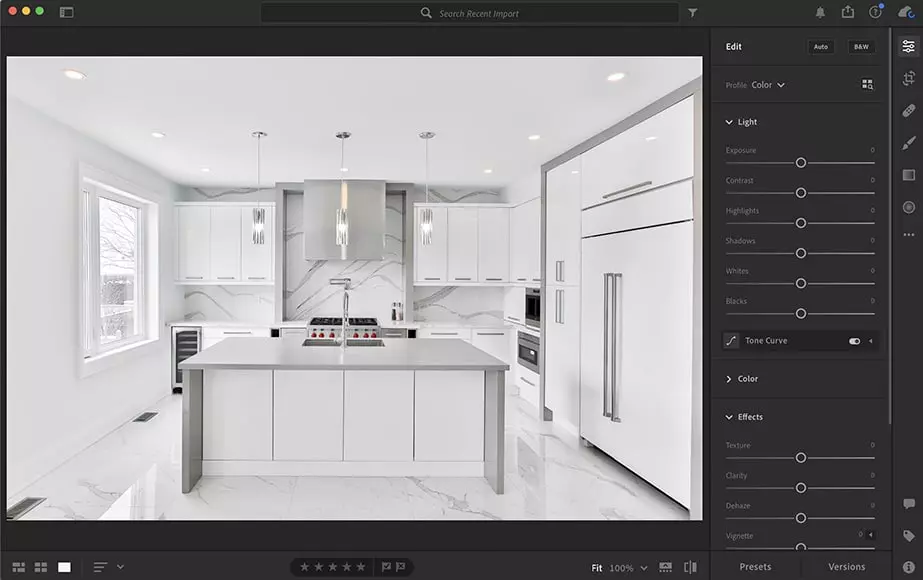If you've ever searched for a property to buy or rent, you know how crucial professional photography is in the real estate industry. Whether you want to break into the real estate photography business or sell your own home, this article is for you.
What Is Real Estate Photography?
Real estate photography involves capturing photos of the interiors and exteriors of properties to showcase them on the market. Additionally, real estate photographers are often hired by designers or magazines to highlight properties for various purposes.
Equipment Needed for Real Estate Photography
The beauty of real estate photography is that you can start small and grow your business gradually. To begin, all you need is a camera, a wide-angle lens (or the shortest focal length you have), and a sturdy tripod. The rest of the equipment can be acquired as you progress.
When choosing a camera, consider its performance in handling different light conditions. Shooting in manual mode is essential for controlling settings and bracketing. Opt for a camera that can capture photos in RAW format for better details in highlights and shadows. If possible, aim for a full-frame camera for wider dynamic range, sharper photos, and more impact in the angle of view.
For lenses, a wide-angle lens is a must for real estate photography. A focal length range between 16mm and 35mm should suffice for full-frame cameras. Avoid fish-eye lenses due to excessive distortion. As you advance in your career, consider adding a tilt-shift lens for perspective correction and a standard lens for capturing specific details.
A sturdy tripod is your best friend in real estate photography, especially when working with slow shutter speeds or creating HDR images. Additionally, having flashes, light modifiers, triggers, gray cards/color checkers, drones, 360 cameras, editing software, and online courses can enhance your capabilities and broaden your services.
How to Shoot Real Estate Photography
 Now that you have the necessary equipment, let's explore some real estate photography tips to help you capture stunning images.
Now that you have the necessary equipment, let's explore some real estate photography tips to help you capture stunning images.
Make a shot list that includes standard shots and negotiate additional angles or shots with your client. Being prepared is crucial, so pack your gear in advance and verify that everything is in working order. Confirm with your client that the property is ready before your arrival to avoid wasting time.
Choosing the right time to shoot is vital for real estate photography. Avoid shooting exteriors against the sun and consider the best lighting conditions for interior shots. Experiment with different angles to find the best point of view that captures the essence of the property. Pay attention to reflections and be meticulous in capturing details that enhance the overall presentation.
How to Edit Real Estate Photography
 Consistency is key in real estate photography, and Adobe Lightroom is an ideal editor for achieving this. Use Lightroom to correct white balance, lens distortions, and perspective issues. For more complex editing, such as sky replacement, consider using tools like Luminar 4 for professional results.
Consistency is key in real estate photography, and Adobe Lightroom is an ideal editor for achieving this. Use Lightroom to correct white balance, lens distortions, and perspective issues. For more complex editing, such as sky replacement, consider using tools like Luminar 4 for professional results.
How to Become a Real Estate Photographer
To become a professional real estate photographer, practice as much as possible by capturing images of your own home, family, and friends' properties. Build a portfolio with high-quality images and create a website and dedicated social media profiles for your business. Reach out to potential clients in local real estate agencies or by distributing flyers in your neighborhood.
Consider contacting established photographers to work as their assistant to gain valuable experience and learn about pricing, contracts, and technical improvements. Patience and persistence are key to making a living as a real estate photographer.
How Much Does a Real Estate Photographer Make?
The income of a real estate photographer depends on various factors, such as the property size, number of images delivered, turnaround time, end goal, and special requests. Prices can range from $170 to $230 per shoot, with additional charges for extra photos or services like videos, virtual tours, or aerial photography.
It's advisable to research local photographers and their rates to get a better understanding of the potential income. While it may take time to build a full-time income, real estate photography can be supplemented with stock photography or architectural photography to enhance earnings.
Final Words
Now that you've learned these real estate photography tips, it's time to put them into practice. Share your experiences and let us know how these tips have helped you in the comments section. Happy shooting!











